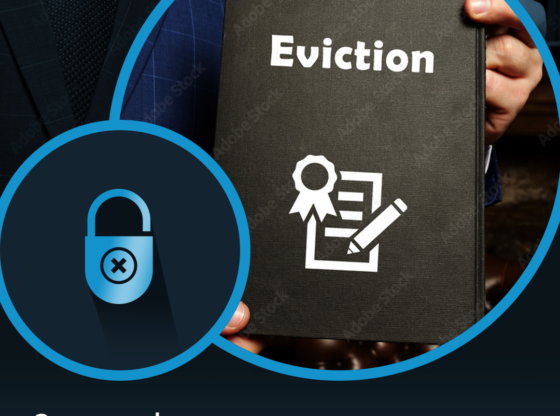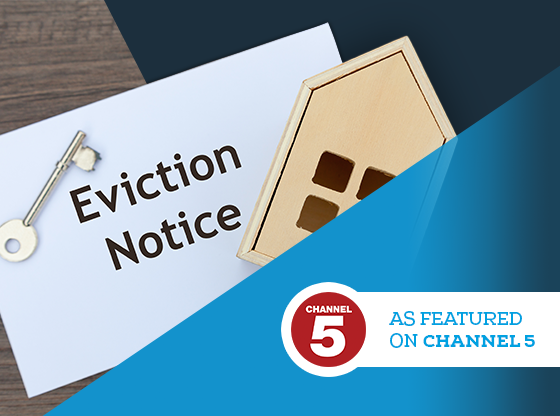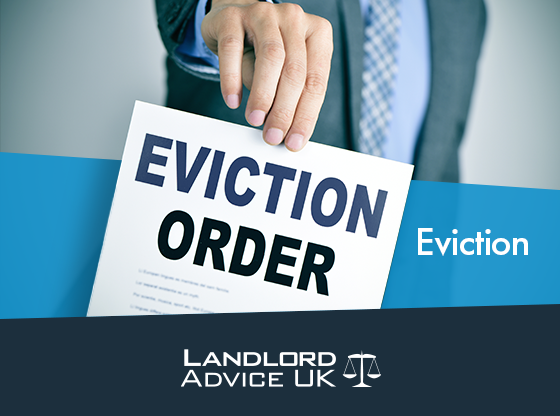Terminating a Rent to Rent Agreement
Rent to Rent agreements, often advertised as Rent Guarantee Agreements, are becoming an increasingly common method for private landlords to let their residential properties.
Whilst there are plenty of reputable companies that offer private landlords rent to rent options, there are also many issues landlords face when letting their property on a rent to rent basis.
A rent to rent, or guaranteed rent, arrangement is where a landlord (“Party A”) will let a property to a company, or person, (“Party B”) on the basis that the property will be lawfully sublet to a subtenant (“Party C”). The advantage many landlords see in this arrangement is that they do not need to manage the property, or deal with the tenant that occupies the property. In most cases, the property is sublet for a profit, and irrespective of whether the Party C is paying rent, Party B is contractually liable to pay Party A rent.
Party A (Head Landlord) – Party B (Tenant) – Party C (Subtenant)
However, in some cases Party B will stop paying rent, or decide to surrender their tenancy, leaving Party A with Party C still in the property. Alternatively, it may be that there are no issues, and Party A simply wants their property back.
Unless the head tenancy has been surrendered by Party B, a notice will need to be served on Party B by the head landlord. There is no requirement to serve notice on the sub-tenant.
What Type of Tenancy is a Rent to Rent Agreement?
In almost all cases, where a residential property is let to a company or individual on the basis the property will be sublet, a contractual tenancy is created, not a statutory tenancy.
This is because a statutory tenancy, such as an assured shorthold tenancy, cannot be created where the tenant is a company. A statutory tenancy cannot be created where the let property is not being used as the principal place of residence either. [1]
The correct way for a landlord to terminate a contractual tenancy is to enforce any forfeiture rights in the case of a breach of contract by the tenant, or to serve a notice to quit to end the tenancy.
Ending the Contractual Tenancy
As long as Party B (the subtenant’s landlord/mesne tenant) continues to hold a tenancy, the subtenant can continue to hold their tenancy. Once the head tenancy (mesne tenancy) ends, the position of the subtenant varies depending on the circumstances, and is more complex.
The common law rule is that when the head tenancy ends, the sub-tenancy also ends. This applies whether the head tenancy ends when a fixed term ends (also known as ‘by effluxion of time’) or by service of a valid notice to quit by either the landlord or the mesne tenant [2].
However, there are exceptions where the subtenant may become the tenant of the head landlord when the head tenancy ends.
The right for the subtenant to remain in occupation after the mesne tenancy ends often depends on the whether the sublet is lawful or unlawful.
A tenant who has been given permission to sublet, subject to any conditions, has created a lawful sub-tenancy.
Even if a subletting is unlawful, it can become if the head landlord waives, or agrees not to act on, the breach of the tenancy agreement. This could be done by continuing to accept rent from the sub-tenant despite being aware of the unlawful subletting.
If the sub-tenancy was lawful, the head landlord must obtain a court order to evict the subtenant (but does not have to prove any grounds for possession) where the mesne tenancy was secure or basic protected. This is because the requirement for a court order in the Protection from Eviction Act 1977 only applies to tenancies that do not have ‘statutory protection’, as defined in the Act. [3]
The head landlord does not have to serve a separate notice on any subtenant.
The lawful subtenants of statutorily protected mesne tenants, are generally not entitled to a court order. Statutorily protected tenants include assured, assured shorthold and regulated tenants.
Unlawful Sub-tenancy
If the sub-tenancy was unlawful, the subtenant is a trespasser not covered by the Protection from Eviction Act 1977. The head landlord does not need to obtain a court order to evict the subtenant.
Exceptions to the General Rule of Automatic Surrender
The following four situations are exceptions to the general rule that the sub-tenancy ends when the head tenancy ends.
- Surrender agreed by the mesne tenant and head landlord
If there is a surrender of the tenancy agreed by the head landlord and mesne tenant, then the sub-tenancy continues and be binding on the head landlord. [4] The tenancy continues on the same terms as the subtenant’s existing agreement, and it appears not to matter whether the subletting is lawful or unlawful. [5]
The subtenant only has a change of status if one of the conditions for the type of tenancy is no longer fulfilled. This could happen if the new landlord is no longer resident or if the new landlord is a public sector landlord and the old landlord was private sector.
In Doe d. Beadon v. Pyke (1816) 5 M. & S. 146 it was argued that a surrender of a lease would annihilate all interests derived under the lease. This was firmly rejected, Lord Ellenborough C.J. considering it to be:
“clear law, that though a surrender operates between the parties as an extinguishment of the interest which is surrendered, it does not so operate as to third persons, who at the time of the surrender had rights, which such extinguishment would destroy, and that as to them, the surrender operates only as a grant, subject to their rights, and the interest surrendered still has, for the preservation of their right, continuance.”
- Forfeiture
Forfeiture is rarely used and is a landlord’s only method of ending a contractual tenancy before it has expired without the tenant’s consent, unless there is a break clause in the agreement
Forfeiture can only be used if there is a term in the tenancy agreement that allows the landlord to forfeit the tenancy for a particular reason.
Reasons for forfeiture could include:
- Breach of covenant’ (not complying with a term of the tenancy)
- Failure to pay the ground rent
- Failure to pay service charges
Where the landlord acts in such a way to unequivocally affirm the lease (such as demanding or accepting payment of rent) then they waive their right to forfeit the lease. [6] Forfeiture proceedings in short-term residential tenancies are now uncommon, as they do not apply to assured tenancies. However, forfeiture proceedings may be encountered where the mesne tenant is a regulated tenant, long leaseholder or business tenant.
- Protection for regulated subtenants – section 137 of the Rent Act 1977
Although the common law rule is that sub-tenancies end when the mesne tenancy ends, there is an important exception to this in section 137 of the Rent Act 1977. If both the mesne tenant and the subtenant are regulated tenants under the Rent Act 1977, and the mesne tenancy ends, then any lawful subtenant becomes the tenant of the head landlord. [7] The tenancy that the subtenant then holds from the head landlord is on the same terms as that which they held from the mesne tenant. [8]
The subletting must be lawful for this to be effective, and the whole of the property must have been sublet. Section 137 does not apply if the mesne tenancy is a protected shorthold tenancy. [9]
If the sub-tenancy is a regulated tenancy of part of the premises, but the mesne tenancy is not a regulated tenancy, the sub-tenancy remains with protection under section 137(3) of the Rent Act 1977 against the head landlord if the mesne tenancy comes to an end. Case law has established that this rule also applies where the mesne tenancy is not a residential tenancy but a business tenancy [10].
- Protection for assured/AST subtenants – section 18 of the Housing Act 1988
Section 18 of the Housing Act 1988 gives assured/assured shorthold subtenants similar protection to that given to regulated tenants.
If the mesne tenant loses or gives up the tenancy, the subtenant becomes the tenant of the head landlord, so long as the subletting was lawful and the subtenant is an assured/assured shorthold tenant. The mesne tenant does not need to be an assured/assured shorthold tenant.
If the mesne tenancy is a business tenancy, the assured/assured shorthold subtenant can still become the tenant of the head landlord. The subtenant then holds an assured/assured shorthold tenancy from the head landlord (unless the tenancy falls into one of the categories of tenancy that cannot be assured under the Housing Act 1988, for example, because the head landlord is the crown or a local authority). [11]
The head landlord cannot serve notice to end the assured/assured shorthold sub-tenancy until the mesne tenancy has ended. [12]
It is not uncommon for the mesne tenant in the private rented sector to be a company. If the company is dissolved, the superior tenancy does not end but vests in the Crown. [13]
[1] Schedule 1 of the Housing Act 1988
[2] Metropolitan Properties Co. v Cordery [1979] 39 P&CR 10 CA.
[3] Pennell v Payne [1995] QB 192.
[4] Mellor v Watkins (1874) LR 9 QB 400.
[5] Parker v Jones [1910] 2 QB 32.
[6] Thomas v Ken Thomas Ltd [2006] EWCA 1504; Greenwood Reversions Ltd v World Environment Foundation Ltd and Mehra [2008] EWCA Civ 47.
[7] s.137 Rent Act 1977.
[8] s.137(2) Rent Act 1977.
[9] s.54(1) Housing Act 1980.
[10] Wellcome Trust Ltd v Hammad [1998] QB 638 CA.
[11] Sch.1 Housing Act 1988.
[12] (1) Barrow & (2) Amey v Kazim & Ors [2018] EWCA Civ 2414.
[13] s.1012 Companies Act 2006; Cussinel v Guerin [2023] UKUT 235 (LC).









